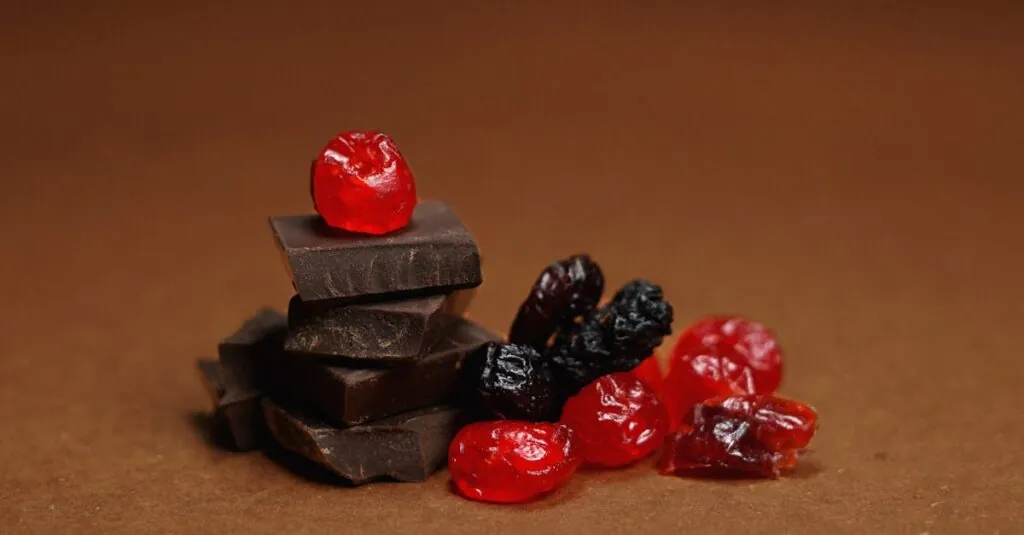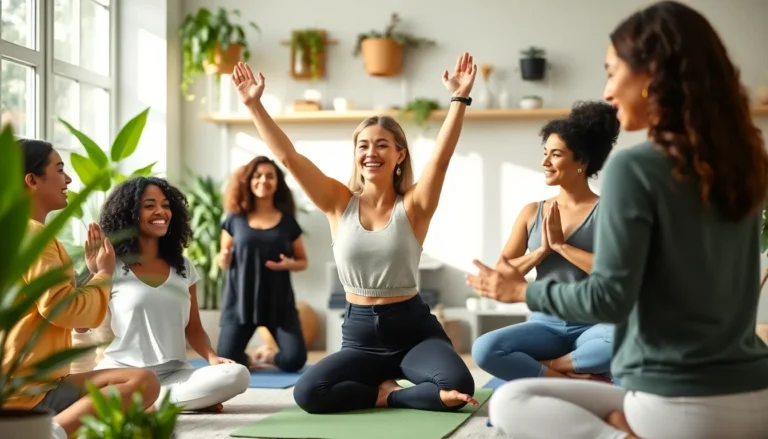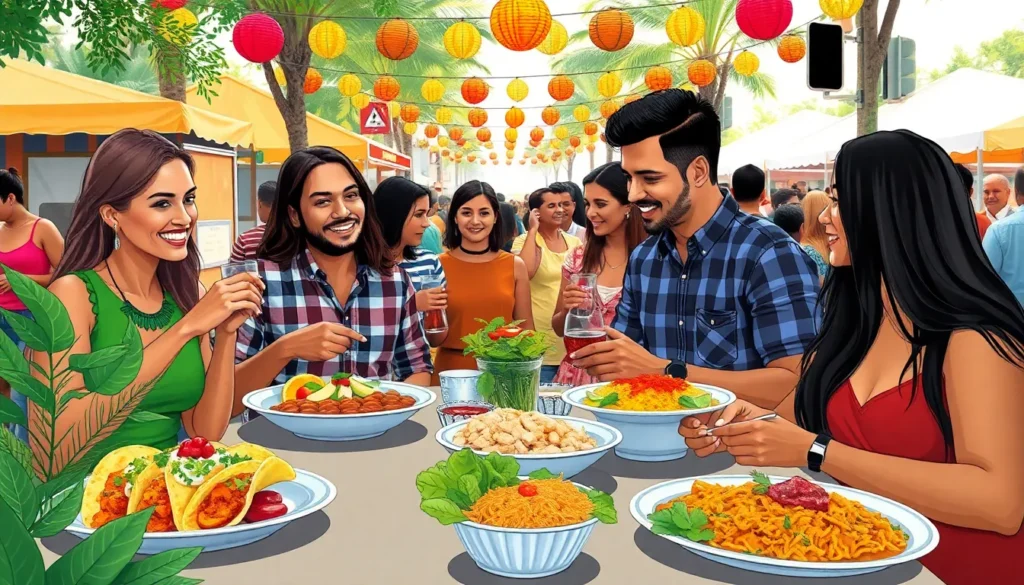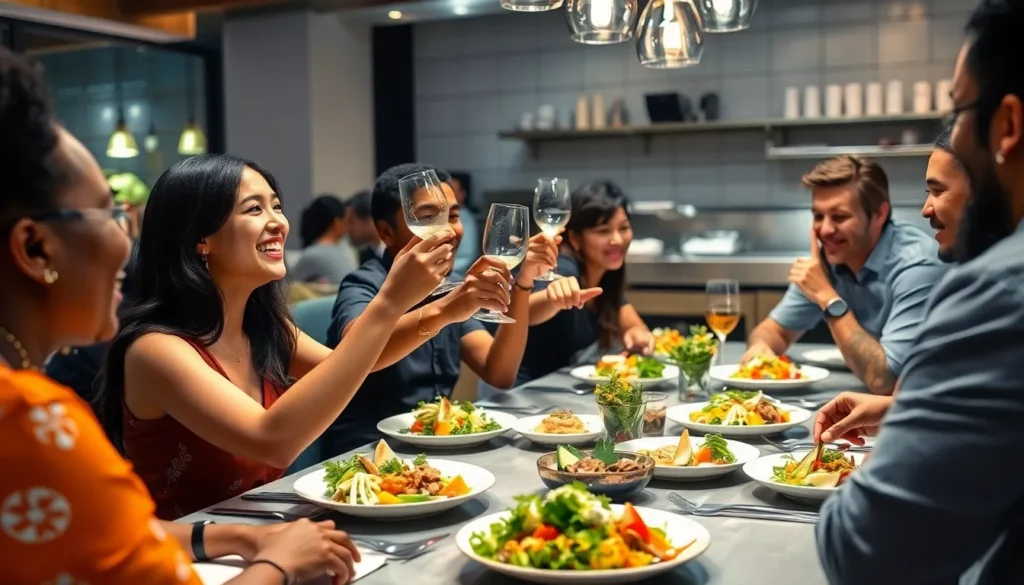In a world where food is just a scroll away, viral recipe formats have taken the culinary scene by storm. From mouthwatering videos that make taste buds tingle to quirky infographics that simplify complex dishes, these formats are the secret sauce behind social media’s most shareable meals. If you think cooking’s just about following a recipe, think again—it’s about capturing attention and igniting cravings.
Table of Contents
ToggleUnderstanding Viral Recipe Formats
Viral recipe formats capture attention through their engaging visuals and interactive elements. Social media platforms popularize these formats, enticing users with both aesthetics and creativity.
What Are Viral Recipe Formats?
Viral recipe formats consist of innovative presentations of cooking instructions. These formats leverage short, captivating videos and eye-catching infographics. They often include a step-by-step guide that’s easy to follow. Users appreciate the quick consumption of content, leading to higher share rates. TikTok and Instagram frequently serve as platforms for these engaging formats, where unique recipes can go viral within hours.
Characteristics of Viral Recipes
Viral recipes feature distinctive traits that enhance their appeal. Clear visuals are paramount, displaying enticing images of the final dish. Creative storytelling often accompanies the recipe, making it relatable and enjoyable. Simplicity plays a key role, as many viral recipes require minimal ingredients or cooking time. Engaging hooks or unexpected flavors attract users’ curiosity. These characteristics contribute to a recipe’s potential to capture a broad audience and resonate widely across social media channels.
Popular Types of Viral Recipe Formats
Viral recipe formats engage audiences through various creative approaches. Each format captures attention differently, appealing to diverse audiences.
Video Recipes
Video recipes dominate social media with their dynamic visuals. Typically lasting under a minute, these clips highlight key cooking steps, making complex dishes easily accessible. Platforms like TikTok and Instagram prioritize short content, leading to the popularity of quick recipe videos. Engaging narration and lively music enhance viewer enjoyment, driving shares and likes. The visually stimulating nature of these videos invites viewers to recreate the dishes and experiment in their kitchens.
Step-by-Step Guides
Step-by-step guides simplify cooking processes through clear instructions. Often presented as infographics or slideshows, these formats break down recipes into manageable parts. Each step includes visuals, ensuring even novice cooks can follow along. Step-by-step guides frequently feature helpful tips, making them educational and engaging. By incorporating practical advice, these guides support a broader understanding of cooking techniques and ingredients.
Listicles and Roundups
Listicles and roundups compile multiple recipes into a single format, enhancing convenience for users. Readers appreciate categorized lists, such as “10 Quick Breakfasts” or “5 Easy Dinner Recipes.” These formats often highlight niche themes or seasonal ingredients, attracting specific audiences. Users can easily browse and discover new dishes, increasing the likelihood of shares. The clickable nature of listicles encourages interaction, driving traffic to cooking blogs or websites.
Platforms for Sharing Viral Recipes
Various platforms enhance the visibility of viral recipes. These venues shape cooking trends and amplify engagement.
Social Media
Social media platforms like TikTok and Instagram play crucial roles in sharing viral recipes. With their visually driven content, they captivate users through dynamic videos and appealing images. Short video clips effectively demonstrate cooking techniques, often under one minute. Creative hashtags further enhance discoverability, allowing users to easily find trending recipes. Engaging content encourages comments and shares, creating a community around culinary exploration.
Food Blogs and Websites
Food blogs and dedicated recipe websites provide in-depth content. Detailed articles often include personal anecdotes, resulting in a relatable cooking experience. Readers appreciate well-organized categories, making navigation simple. Blogs often combine traditional recipes with modern twists, attracting diverse audiences. In addition, search engine optimization strategies ensure greater visibility, helping recipes reach wider audiences. Visual components like high-quality photos complement written instructions, enhancing user engagement.
Recipe Apps
Recipe apps serve as convenient resources for home cooks. Many include features that allow users to save favorite recipes, share their creations, and discover new dishes based on preferences. User-friendly interfaces streamline searching and filtering, making recipe exploration enjoyable. Some apps incorporate community features, enabling users to rate and review recipes. Curated collections often highlight trending and seasonal recipes, keeping content fresh and engaging.
Creating Your Own Viral Recipe Format
Creating a compelling viral recipe format involves strategic elements that captivate audience interest and encourage sharing. Engaging content not only showcases recipes but also creates a sense of connection with viewers.
Tips for Engaging Content
Focus on storytelling to draw in viewers. Use descriptive language that highlights flavors and cooking techniques. Incorporate elements that evoke emotions, such as family traditions or cultural significance. Ask questions to encourage interaction, inviting viewers to share their experiences. Keep the content concise yet informative, simplifying complex processes into bite-sized pieces. Emphasize the benefits of each recipe to entice audiences to try them. By maintaining a relatable tone and including personal anecdotes, content becomes more accessible and enjoyable to a wider audience.
Incorporating Visuals
Visuals play a critical role in attracting attention. Utilize high-quality images that showcase finished dishes in an appetizing way. Short videos can highlight essential steps, creating dynamic and interactive experiences. Integrate infographics that break down recipes into easily digestible formats, aiding comprehension. Use vibrant colors to enhance appeal and maintain brand consistency across platforms. Ensure all visuals align with the recipe’s theme, reinforcing its story and purpose. Each visual element should draw the viewer in, enhancing their desire to recreate the dish.
The evolution of viral recipe formats has redefined how people engage with cooking. By blending creativity with accessibility these formats invite a broader audience to explore culinary delights. Engaging visuals and innovative storytelling not only make cooking more enjoyable but also foster a sense of community among food enthusiasts.
As creators embrace these dynamic approaches they can inspire others to join in the culinary adventure. The digital landscape continues to shape the way recipes are shared and experienced making it essential for aspiring cooks and content creators to stay ahead of the trends. Ultimately the art of cooking is now more vibrant and interactive than ever before.









